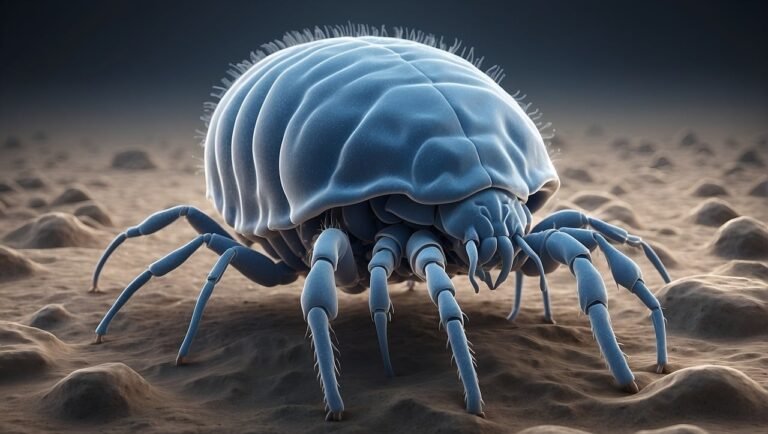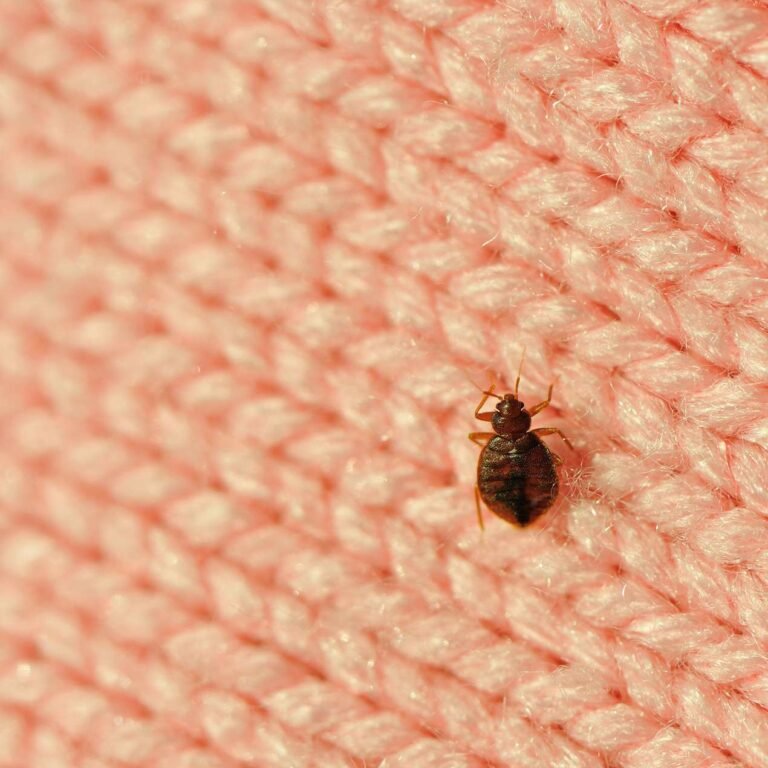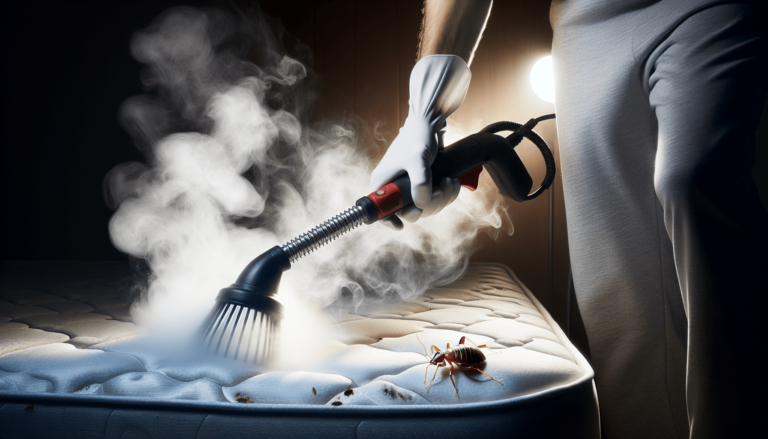Steps to Take When You Discover Bed Bugs
When you discover bed bugs in your home, it can be a distressing situation. These tiny insects can quickly infest your living space and cause discomfort and potential health risks for you and your family. In this article, we will provide you with a comprehensive guide on the steps you should take when you find bed bugs. From initial identification to effective treatment methods, we will equip you with the knowledge and tools necessary to address this issue promptly and effectively. By following the steps outlined in this article, you will be able to take control of the situation and eliminate bed bugs from your home, ensuring a peaceful and bug-free environment.

This image is property of cdn.shopify.com.
Identifying Bed Bugs
Understanding the physical characteristics of bed bugs
When it comes to identifying bed bugs, it is important to familiarize yourself with their physical characteristics. Adult bed bugs are small, flat, and oval-shaped, typically about the size of an apple seed. They have six legs and are reddish-brown in color. Bed bugs have a distinct odor, often described as sweet and musty.
Identifying signs of a bed bug infestation
Apart from physically spotting bed bugs, there are several signs that can indicate their presence. Look for dark spots or stains on your mattress or bedding, which are excrement left behind by bed bugs. You may also find shed bed bug skins as they molt during their lifespan. Additionally, bloodstains on your sheets or pillows can be a clear sign of bed bug bites.
Common areas where bed bugs can be found
Bed bugs are known for their ability to hide and infest various areas in your home. While they are commonly found in and around beds, they can also be found in other furniture, such as sofas and chairs. Bed bugs are particularly attracted to fabric and enjoy living in cracks and crevices. Don’t forget to check behind picture frames, electrical outlets, and along baseboards, as these are popular hiding spots for bed bugs.
Confirming Bed Bug Presence
Looking for early signs of bed bugs
It is crucial to catch a bed bug infestation early on to prevent it from spreading further. Keep an eye out for small black dots on your bedding, which can be a sign of bed bug excrement. If you wake up with itchy, red bites in a linear or clustered pattern, this could also indicate the presence of bed bugs. Additionally, check for small white eggs or tiny translucent bugs in the creases and seams of your mattress.
The necessity of a professional inspection
While you may be able to identify certain signs of bed bugs on your own, it is highly recommended to seek professional help for a thorough inspection. Bed bugs can be difficult to detect, especially in the early stages of an infestation. Pest control professionals have the experience and expertise to thoroughly inspect your home and accurately determine the extent of the infestation.
Utilizing bed bug detection tools
Professional pest control companies often use specialized tools and techniques to confirm the presence of bed bugs. These can include using a trained bed bug dog to sniff out infestations, the use of bed bug monitors, and heat sensors to detect bed bug activity. These tools can help pinpoint the areas of your home where bed bugs are hiding, allowing for targeted treatment.
Understanding the Risks
Health risks associated with bed bugs
While bed bugs are not known to transmit diseases, their presence can still pose health risks. Bed bug bites can cause itching, redness, and swelling, which can lead to secondary infections if scratched excessively. Some people may also have an allergic reaction to bed bug bites. The stress and anxiety caused by a bed bug infestation can also have a negative impact on mental health.
Psychological and social effects of a bed bug infestation
The presence of bed bugs can cause significant psychological distress. The fear of being bitten during sleep can lead to anxiety and sleep deprivation. Bed bug infestations can also have social consequences, as people may avoid visiting or staying at an impacted home out of fear of bringing bed bugs back to their own residences. The stigma associated with bed bugs can lead to social isolation and feelings of shame.
Impact of bed bugs on property value
If you are a homeowner, a bed bug infestation can have a negative impact on your property value. Potential buyers may be deterred by the presence of bed bugs, as they can be difficult and costly to eradicate. In rental properties, tenants may be unwilling to renew their lease or may seek rent reductions due to ongoing bed bug issues. Therefore, it is essential to address bed bug infestations promptly to minimize the impact on property value.
DIY Bed Bug Control Measures
The effectiveness and limitations of DIY solutions
While it may be tempting to try to tackle a bed bug infestation on your own, it is important to understand the limitations of DIY solutions. DIY methods such as using store-bought sprays or powders may provide temporary relief but are often not sufficient to eliminate the entire infestation. Bed bugs are resilient and can quickly adapt to survive pesticide treatments. Professional pest control is generally more effective in eradicating bed bugs completely.
Using heat treatment for bed bugs
One effective method of bed bug control is heat treatment. This involves raising the temperature in the infested area to a level that is lethal to bed bugs. Heat treatment targets bed bugs in all stages of their life cycle, including eggs, nymphs, and adults. Professional pest control companies have specialized equipment to ensure that the heat is evenly distributed throughout the infested area, ensuring maximum effectiveness.
Applying bed bug sprays and powders
If you choose to use DIY sprays or powders to combat bed bugs, it is important to follow the instructions carefully. Make sure to thoroughly treat all areas where bed bugs are suspected to be hiding, including cracks and crevices. However, keep in mind that these products may only provide temporary relief and may not eliminate the entire infestation. It is always recommended to seek professional help for a comprehensive solution.

This image is property of images.saymedia-content.com.
Hiring a Pest Control Professional
Benefits of hiring a professional pest control service
Hiring a professional pest control service offers several benefits when dealing with a bed bug infestation. Pest control professionals have access to specialized equipment and knowledge to effectively eliminate bed bugs. They can tailor their treatment plans to your specific situation and provide recommendations to prevent future infestations. Professional pest control services also offer warranties, ensuring that the infestation is fully resolved.
Choosing the right pest control service
When selecting a pest control service, it is important to do your research and choose a reputable and experienced company. Look for companies that specialize in bed bug extermination and have positive customer reviews. Ensure that the company is properly licensed and insured. Request a detailed estimate and ask about the specific treatment methods they use, including their approach to minimizing pesticide exposure.
Costs related to professional bed bug extermination
The cost of professional bed bug extermination can vary depending on the size of the infestation and the extent of treatment required. It is advisable to obtain multiple quotes from different pest control companies to compare prices and services offered. Keep in mind that while costs may seem high initially, investing in professional treatment can save you money in the long run by effectively eliminating the infestation.
Preparation for Treatment
Creating an action plan
Before the scheduled treatment, it is crucial to create an action plan to prepare your home. This plan should outline the steps you need to take to ensure that the treatment is as effective as possible. It may involve decluttering and removing unnecessary items, washing and drying bedding and clothing on high heat, and vacuuming the entire house. Follow the specific instructions provided by the pest control company to prepare your home adequately.
Cleaning and decluttering
Cleaning and decluttering your home is an essential part of preparing for bed bug treatment. Remove any unnecessary items that may provide hiding spots for bed bugs. Vacuum all areas, paying close attention to cracks and crevices where bed bugs may be hiding. Dispose of the vacuum bag or empty the canister in a sealed plastic bag outside the home. Launder all bedding, clothing, and curtains on high heat and store them in sealed bags or containers.
Packing personal belongings
When preparing for bed bug treatment, it is necessary to pack personal belongings that may be affected. This includes clothing, toys, books, and any other items that can be safely laundered or heat-treated. Place these items in sealed, plastic bags or containers to prevent reinfestation after treatment. It is essential to follow the instructions provided by the pest control company regarding the specific items that need to be packed and treated.

This image is property of cdn.shopify.com.
Post-Treatment Procedure
Follow-up inspections after treatment
After the initial treatment, it is crucial to schedule follow-up inspections to ensure that the bed bug infestation has been completely eradicated. Pest control professionals will assess the effectiveness of the treatment and determine if any additional action is needed. It may take multiple treatments to eliminate all bed bugs, especially in severe infestations. Follow the recommendations of the pest control company to ensure long-term success.
What to do in case of a recurring infestation
In rare cases, bed bug infestations may recur even after professional treatment. If you notice signs of a recurring infestation, such as bites or spotting bed bugs, notify your pest control company immediately. They will assess the situation and determine the appropriate course of action. It is essential to act quickly to prevent the infestation from spreading and to address any potential underlying causes.
Cleaning up after the extermination
After the bed bug infestation has been successfully treated, it is important to clean and restore your home. Thoroughly vacuum all areas, including furniture, carpeting, and mattresses. Steam clean upholstered furniture and mattresses, if possible, to eliminate any remaining bed bugs or eggs. Clean and sanitize all surfaces, paying close attention to cracks and crevices where bed bugs may have been hiding. Dispose of any sealed bags or containers used to pack belongings safely.
Preventing Future Infestation
Regular inspection for early detection
To prevent future bed bug infestations, it is essential to conduct regular inspections of your home. Check your bedding, mattresses, and furniture regularly for signs of bed bugs or their presence, such as dark spots or shed skins. Consider using mattress and box spring encasements designed to prevent bed bugs from entering or escaping. Be vigilant when traveling or staying in hotels, as bed bugs can hitch a ride on luggage or clothing.
Proper maintenance and sanitation
Keeping your home clean and well-maintained can help prevent bed bug infestations. Regularly vacuum your home, paying close attention to cracks and crevices where bed bugs may hide. Wash and dry bedding, curtains, and clothing on high heat to kill any potential bed bugs. Minimize clutter in your home, as it provides more hiding spots for bed bugs. Seal any cracks or crevices in walls, baseboards, or furniture to prevent bed bug entry.
Utilizing bed bug prevention products
There are various bed bug prevention products available that can help safeguard your home. These include mattress and box spring encasements, bed bug interceptors, and residual sprays or powders. Mattress encasements create a barrier, preventing bed bugs from infesting your mattress. Bed bug interceptors are placed under the legs of your bed to trap and monitor any bed bug activity. Residual sprays or powders can be applied as a preventive measure along potential entry points.

This image is property of miro.medium.com.
Public Health Responsibility
Reporting bed bug infestations
When dealing with bed bugs, it is important to fulfill your public health responsibility by reporting infestations. If you live in a multi-unit building or rental property, inform your landlord or property management immediately. They have a legal obligation to address the infestation promptly and take appropriate measures to control and eliminate the bed bugs. Timely reporting can help prevent the infestation from spreading to other units.
Understanding legal obligations and tenant rights
Both landlords and tenants have legal responsibilities and rights when it comes to bed bug infestations. Landlords are required to provide habitable living conditions and address any pest infestations, including bed bugs. Tenants are responsible for notifying the landlord of any suspected infestations promptly and cooperating during treatment. Familiarize yourself with your local laws and regulations regarding bed bug infestations to ensure compliance.
Public health initiatives against bed bugs
Bed bug infestations have become a public health concern in many communities. As such, public health initiatives have been implemented to address the issue. These initiatives often focus on education and awareness, providing resources and information to the public on bed bug prevention and control. Local health departments and organizations may offer workshops, seminars, or online materials to educate the community about bed bug detection, treatment, and prevention.
Psychological Support and Coping Strategies
Living with the stigma of bed bugs
Bed bug infestations often carry a social stigma due to misconceptions and misunderstandings. Living with the stigma of bed bugs can be challenging and emotionally draining. It is important to remember that bed bugs can happen to anyone and do not reflect personal hygiene or cleanliness. Seek support from friends, family, or support groups to help cope with the emotional toll of a bed bug infestation.
Resources for psychological support
If you are experiencing significant psychological distress due to a bed bug infestation, there are resources available to help. Consider seeking therapy or counseling to address anxiety, stress, or other mental health issues related to the infestation. Support groups or online forums can also provide a sense of community and understanding among those who have experienced bed bug infestations. Remember that seeking support is a sign of strength, and you are not alone in this experience.
Coping strategies and maintaining a normal routine
During a bed bug infestation, it is important to focus on coping strategies and maintaining a sense of normalcy. Establish a routine that includes self-care activities to reduce stress and promote well-being. Practice stress management techniques such as deep breathing, meditation, or exercise. Keep your living space clean and organized, as it can contribute to a sense of control and calm. Remember that the infestation will be resolved with time and proper treatment.
By understanding the physical characteristics of bed bugs, identifying signs of infestation, and knowing the risks associated with them, you can be better prepared to handle a bed bug problem. Whether you choose to pursue DIY control measures or hire a professional pest control service, taking prompt action and following proper protocols is essential. Remember that preventing future infestations and fulfilling your public health responsibility can help protect yourself and your community. Finally, seek psychological support and utilize coping strategies to navigate the emotional challenges that may arise during a bed bug infestation.

This image is property of cdn.shopify.com.






